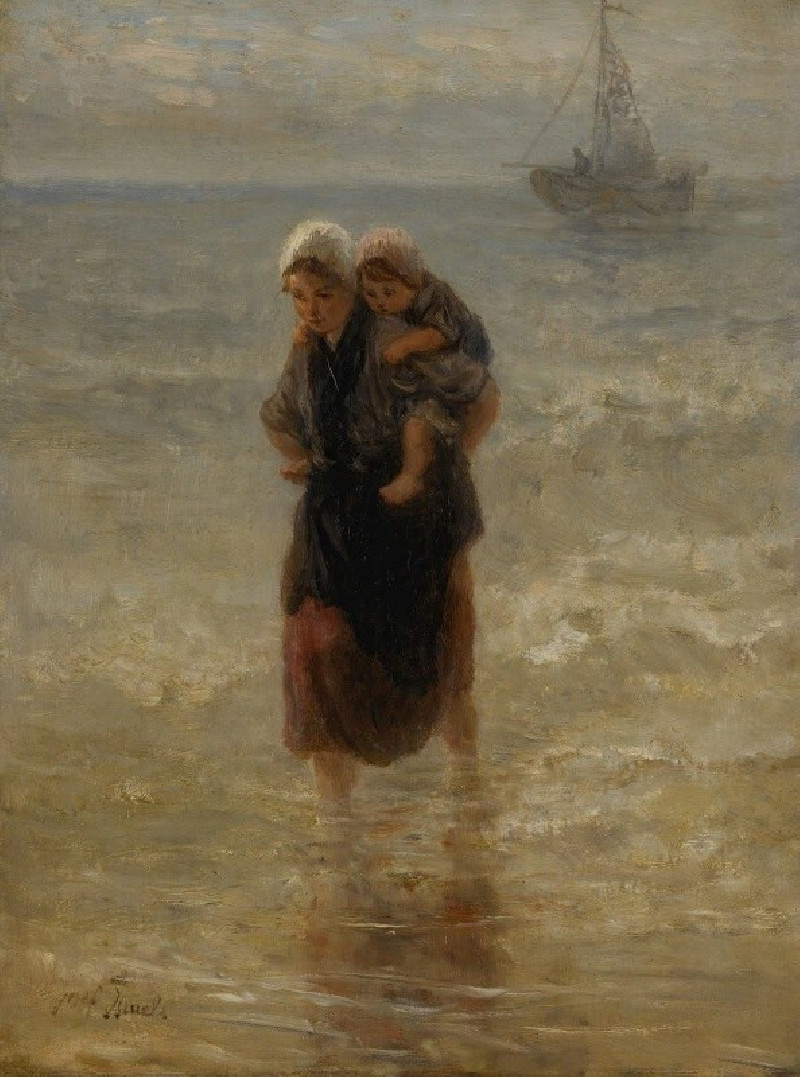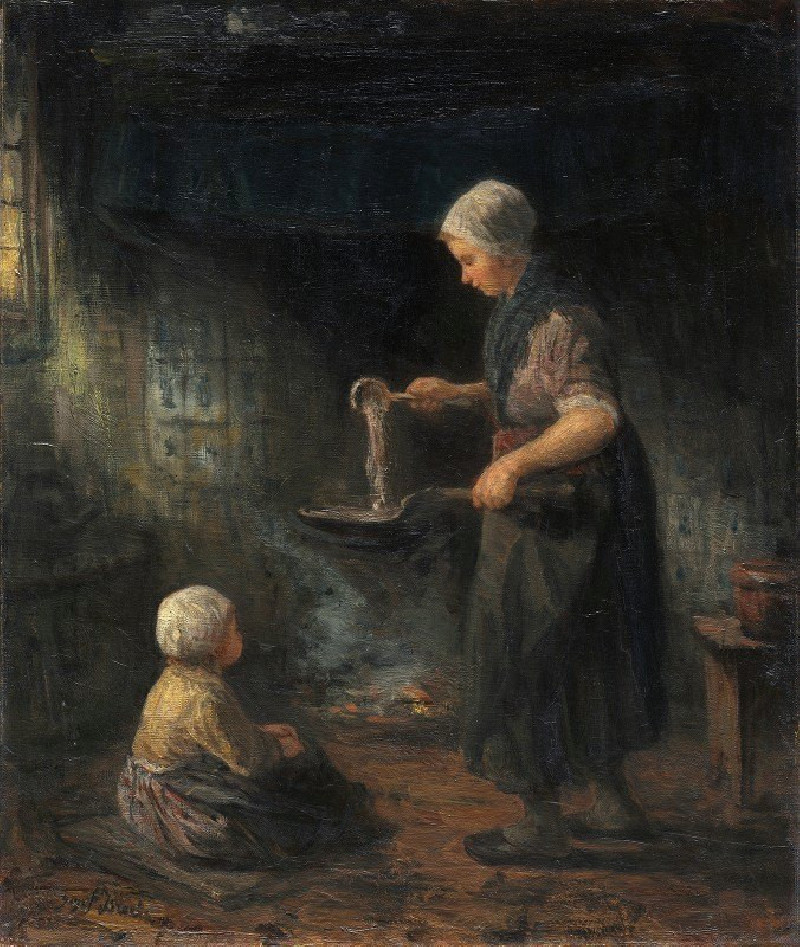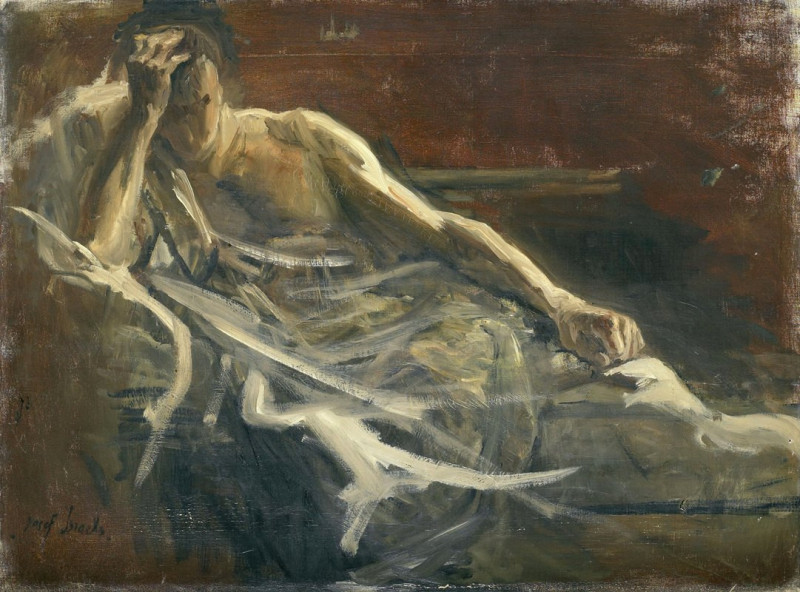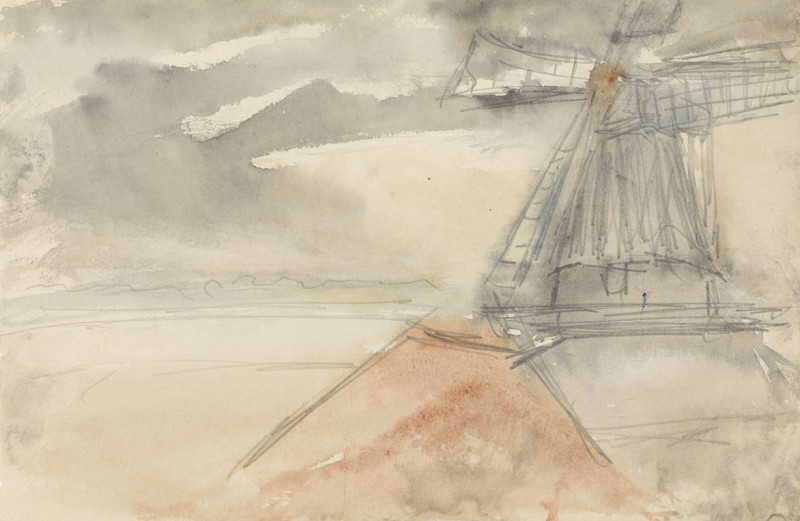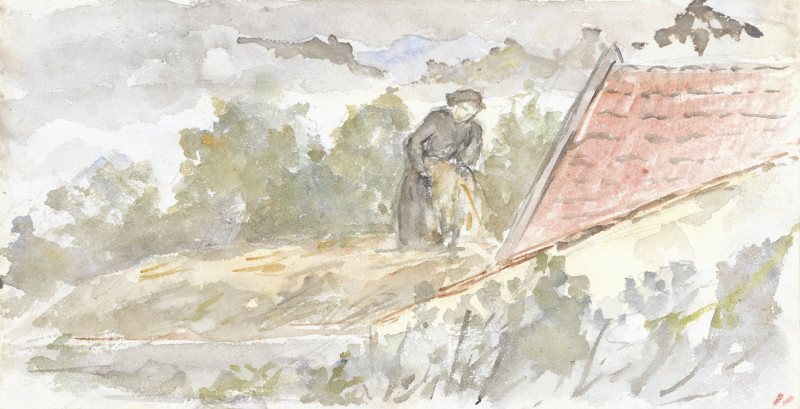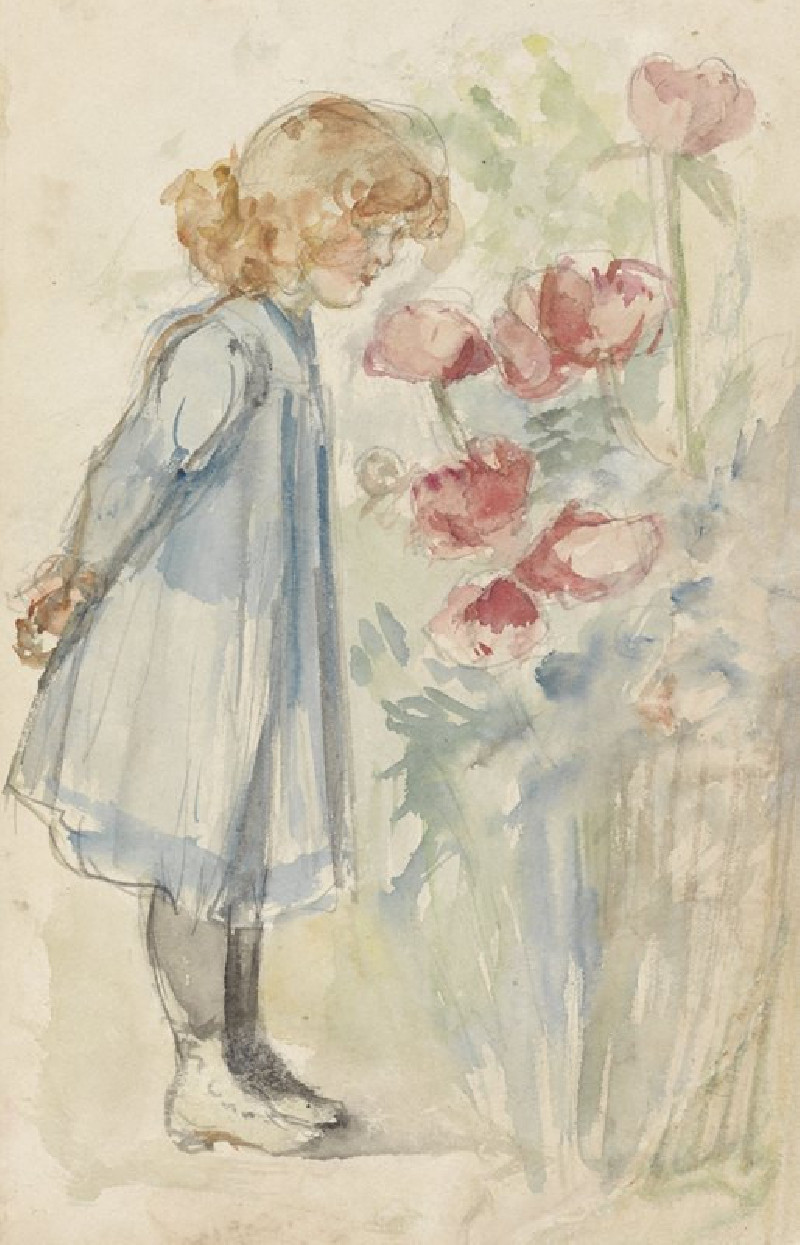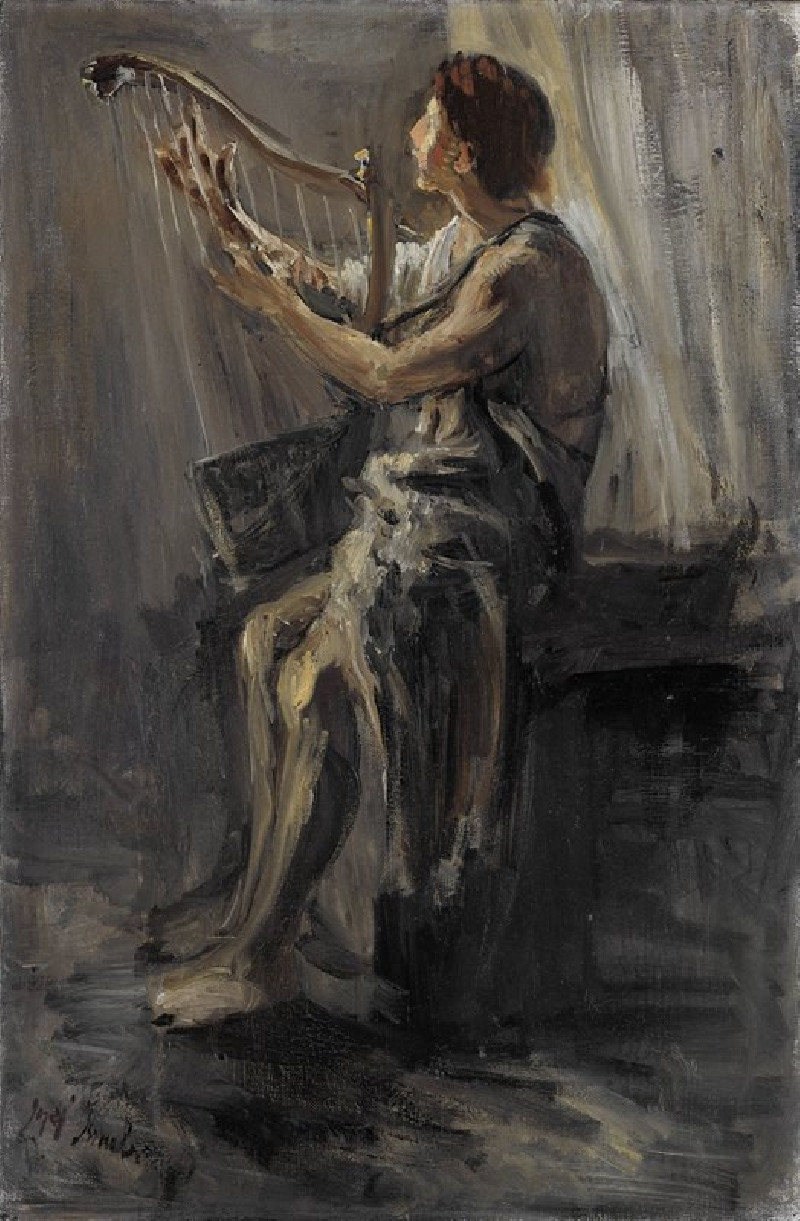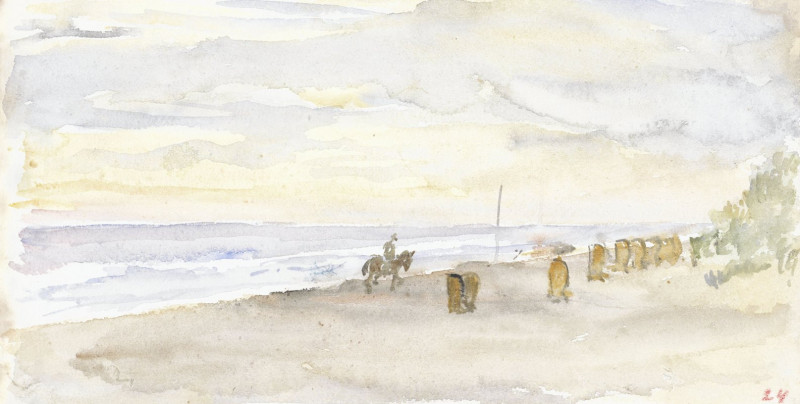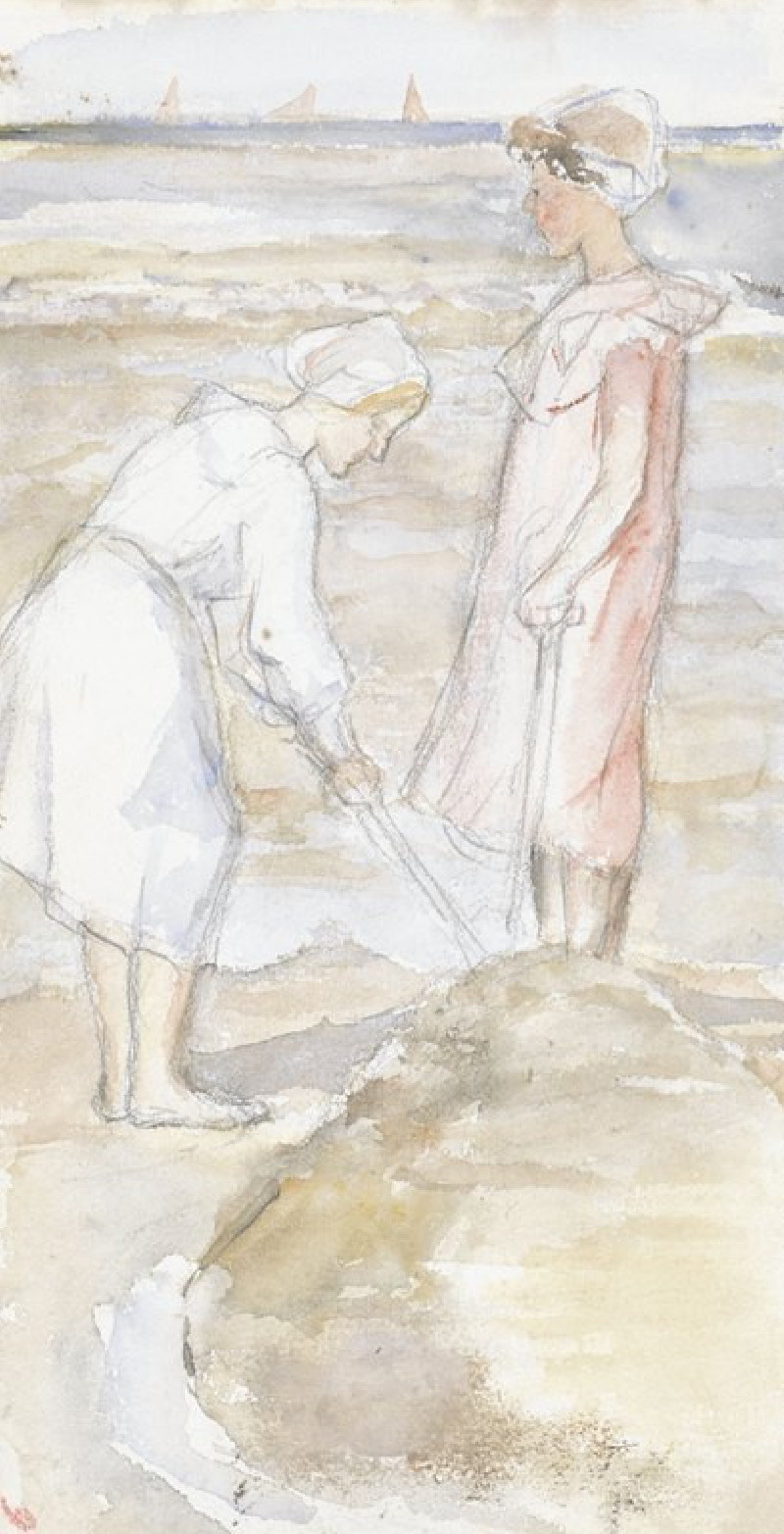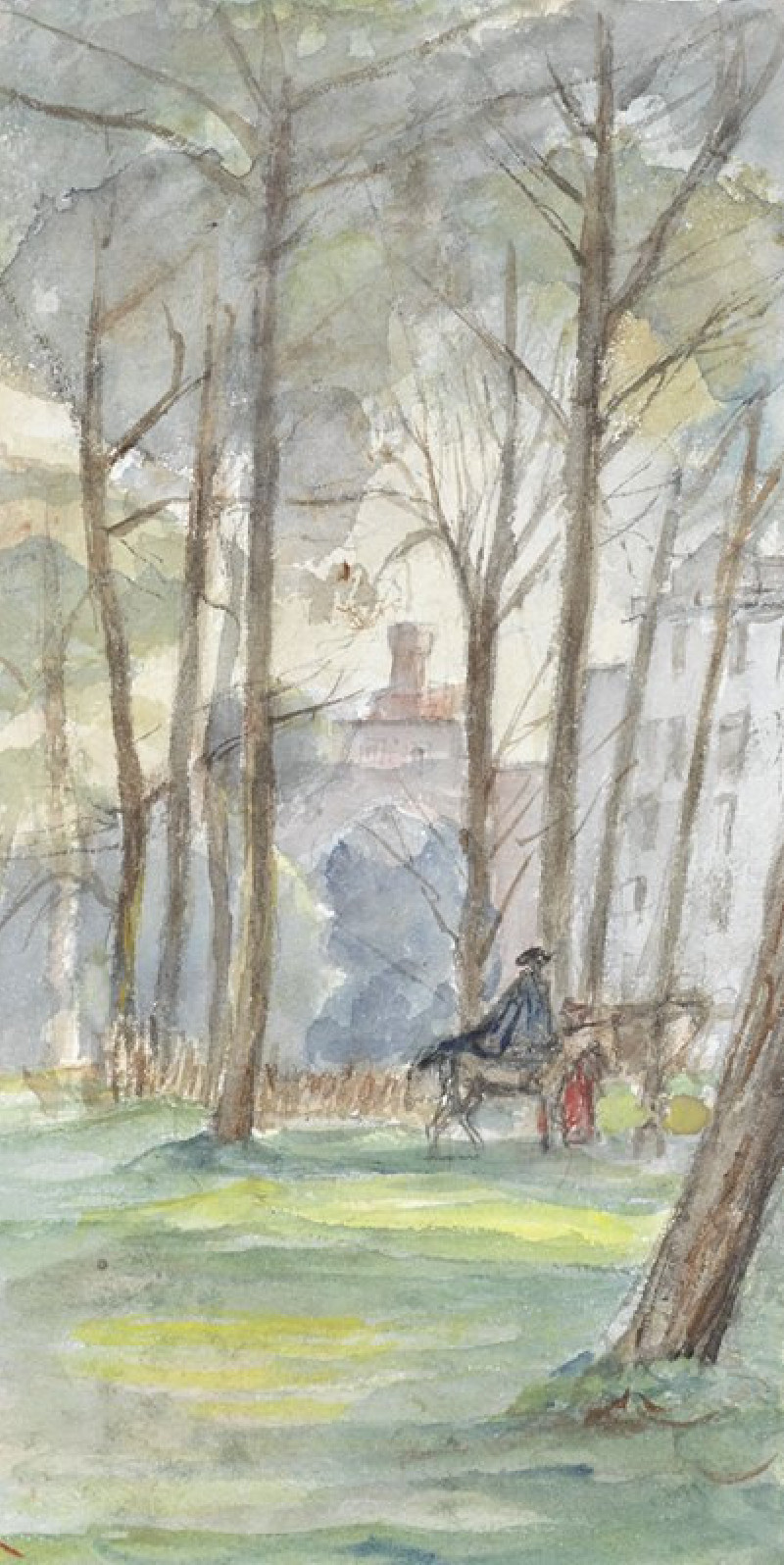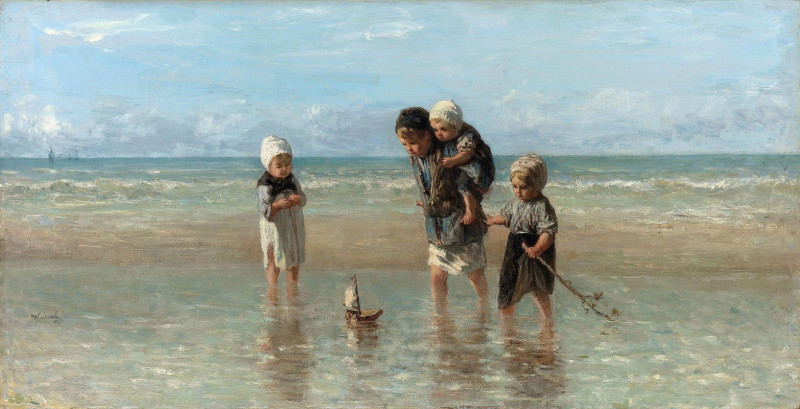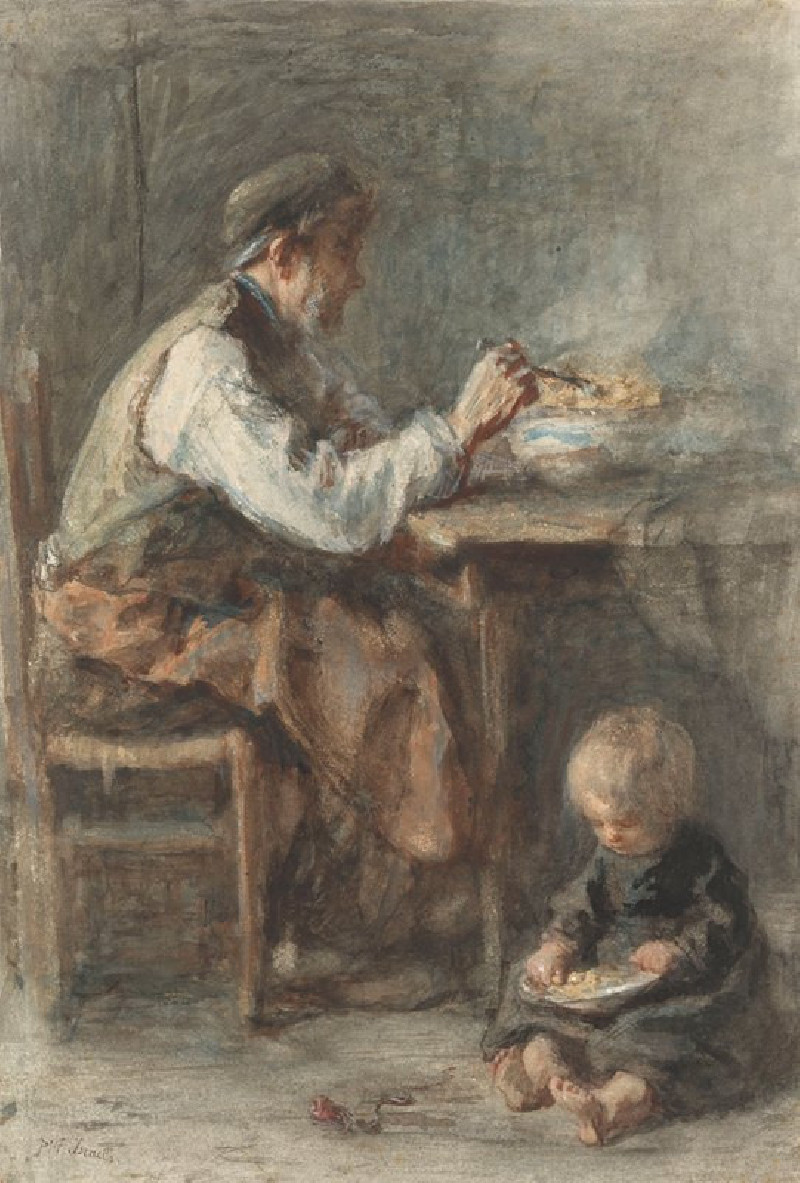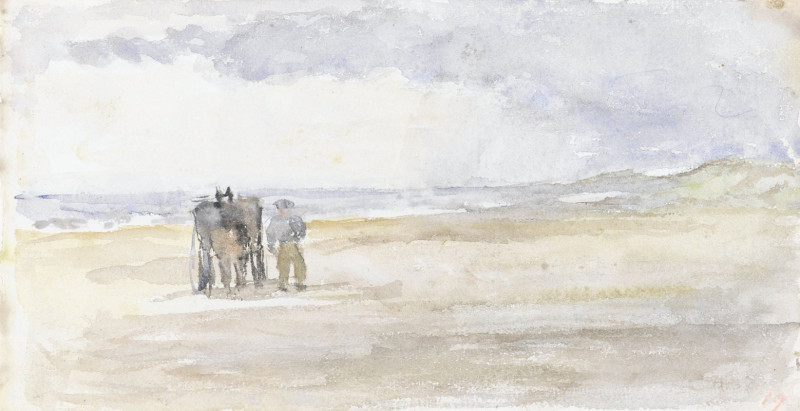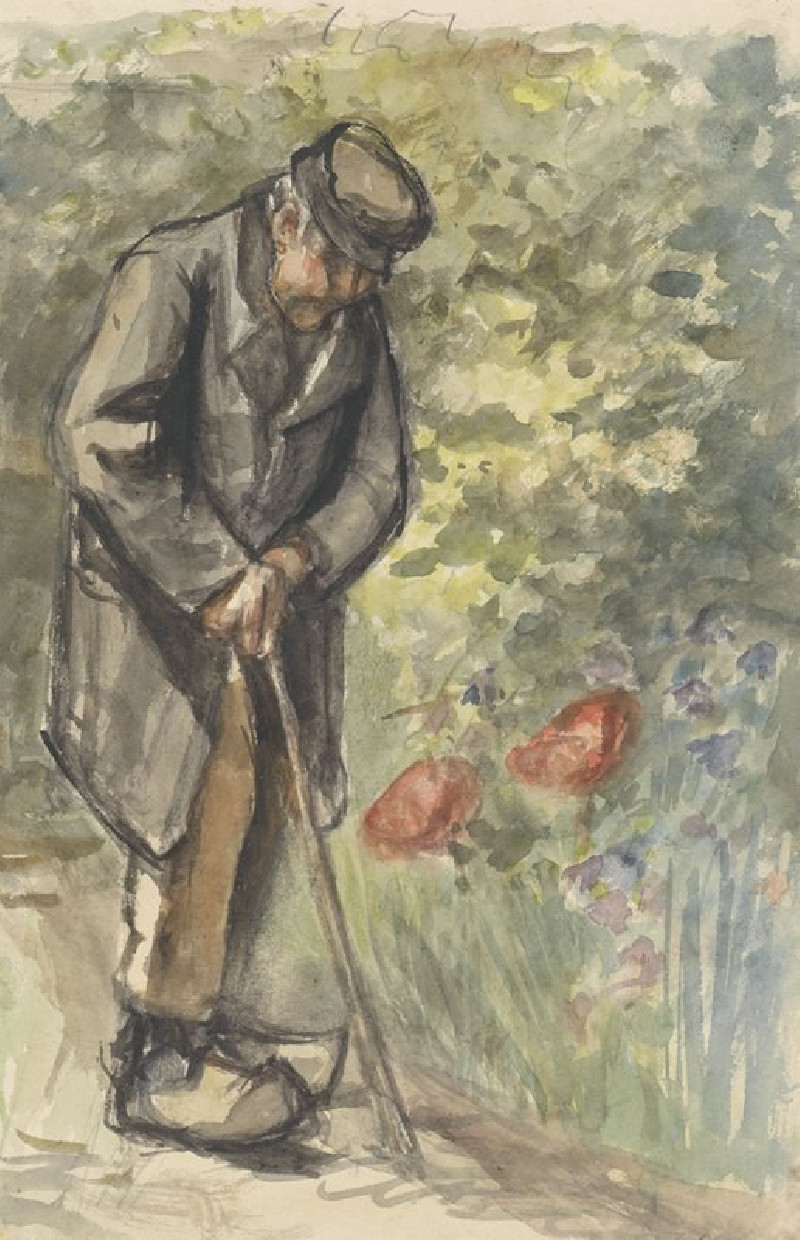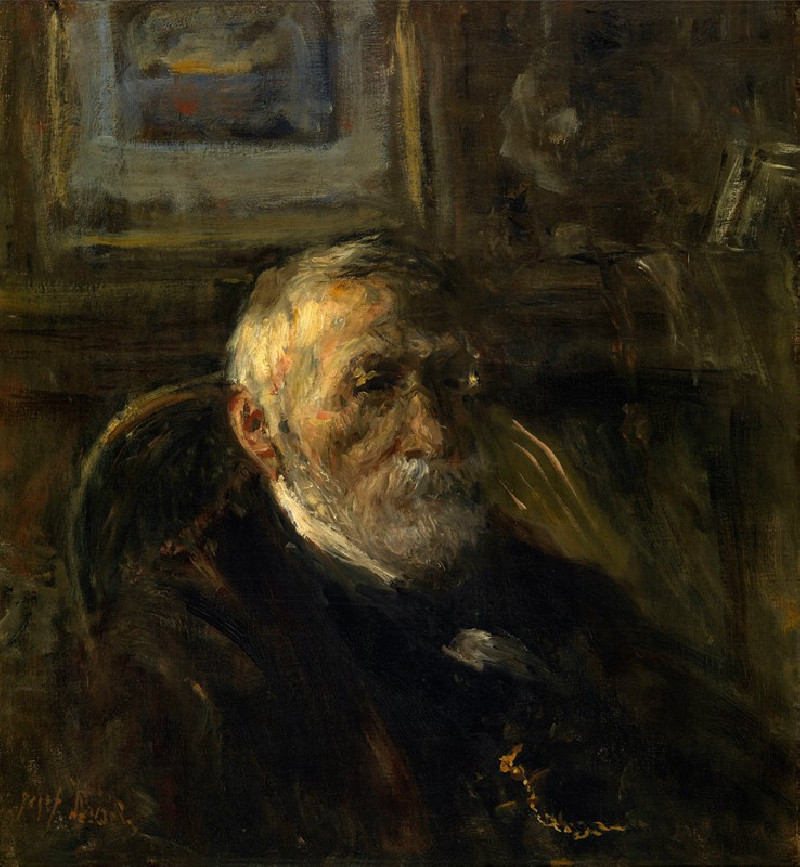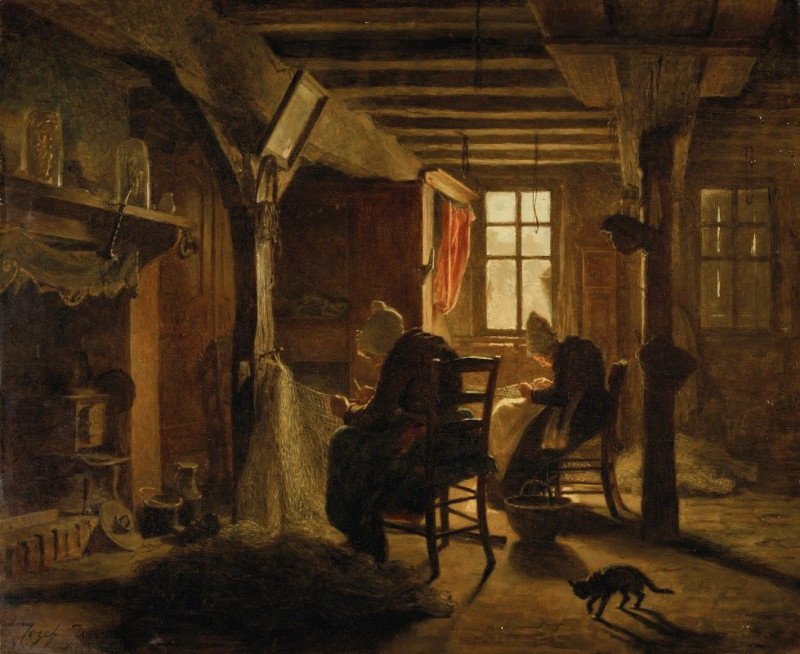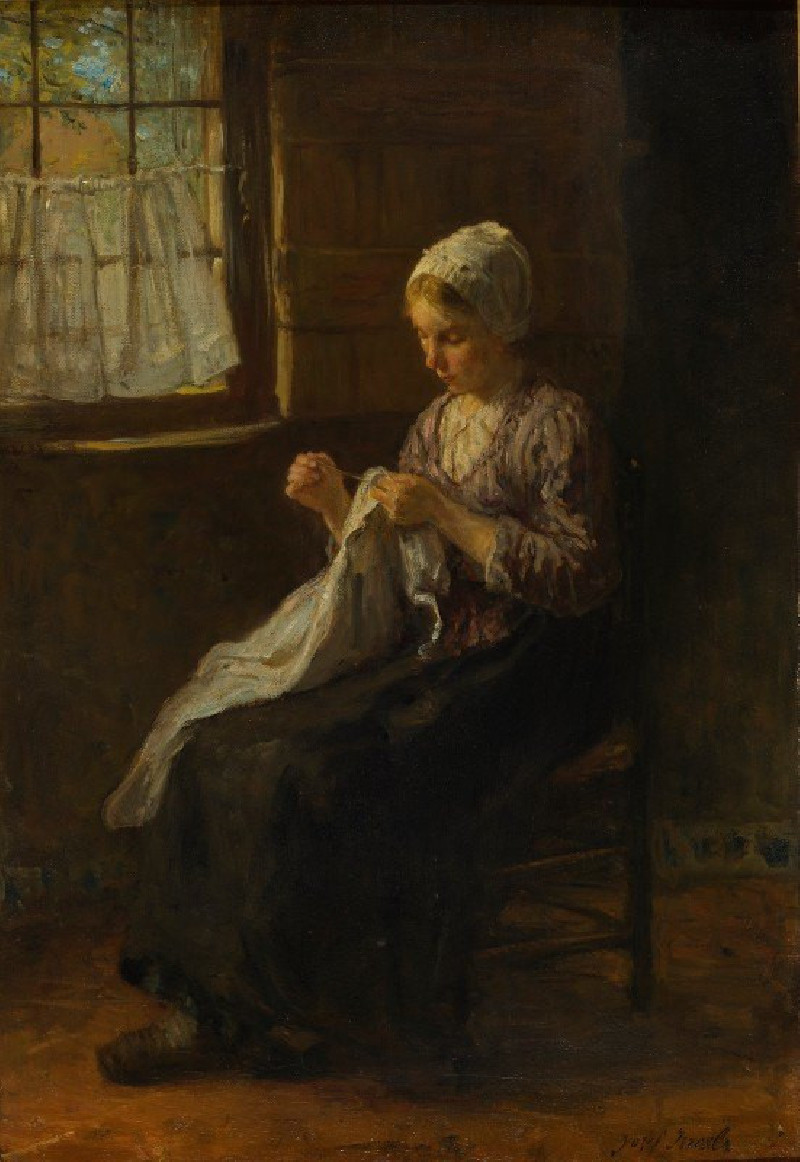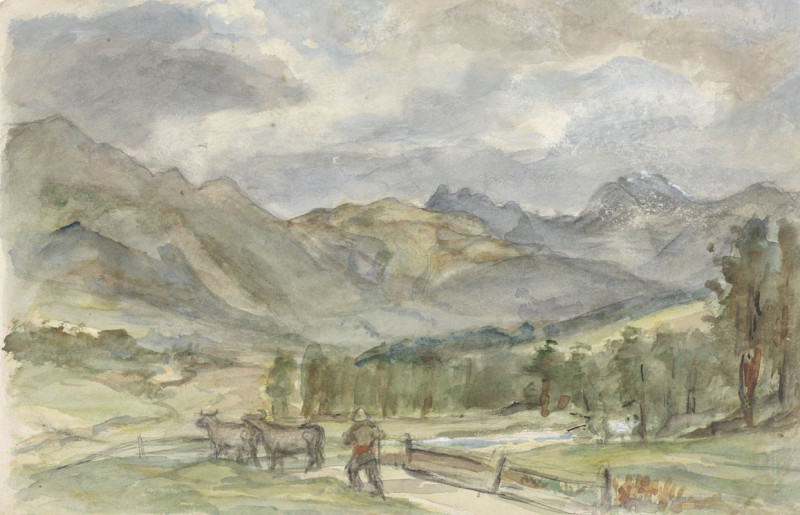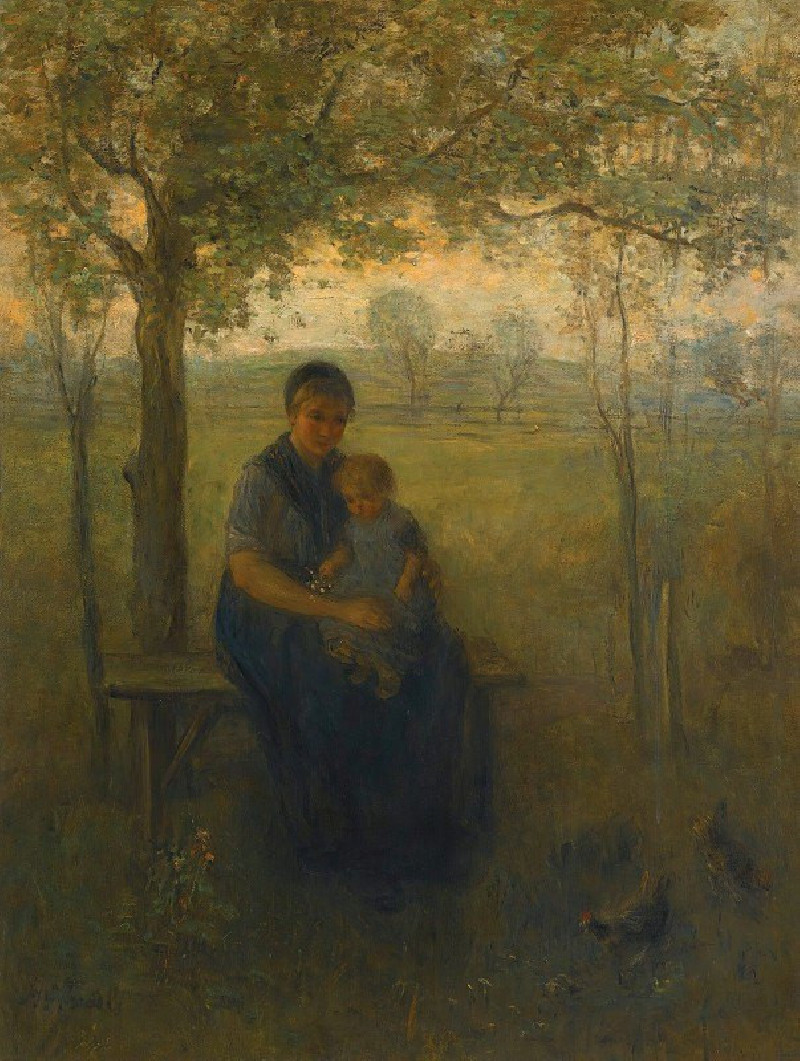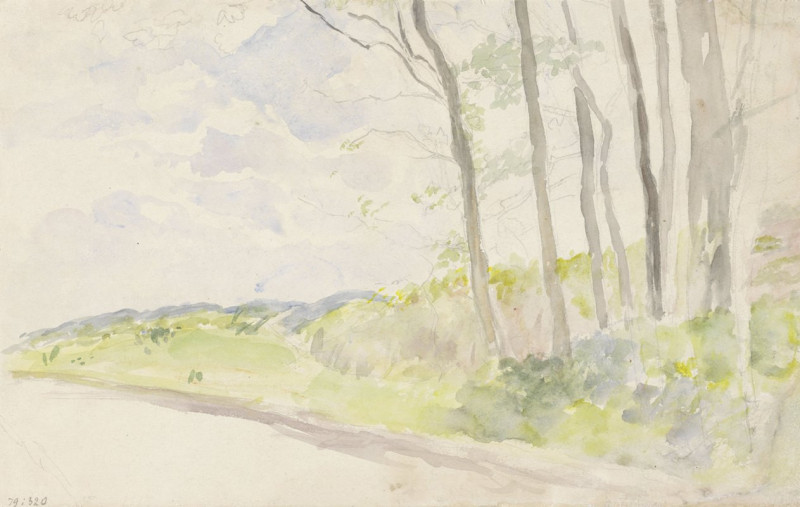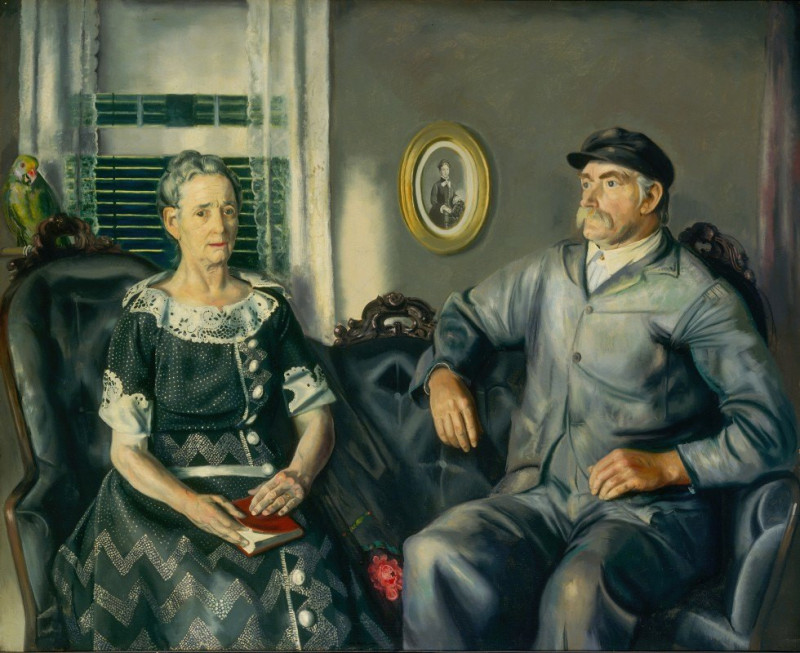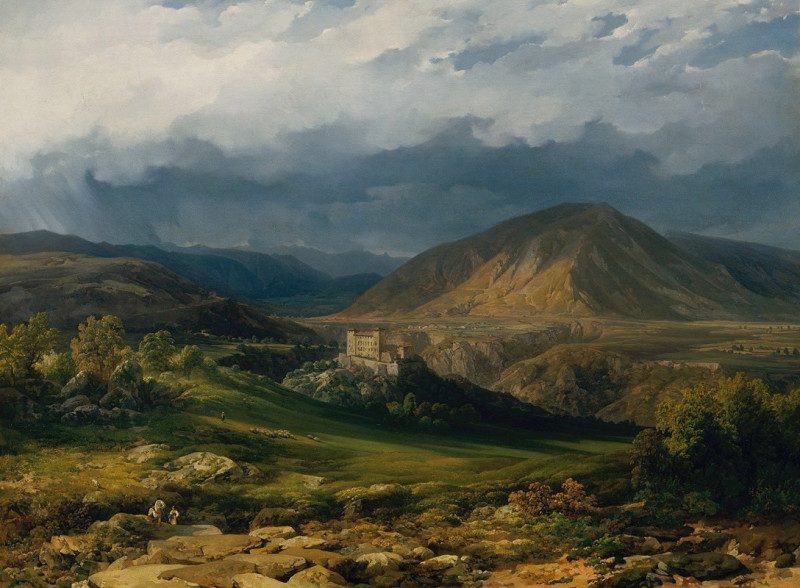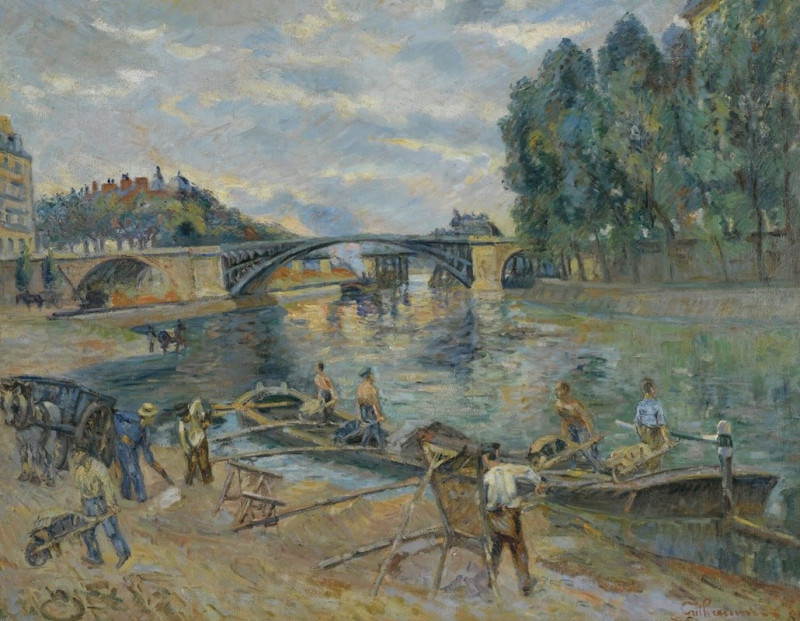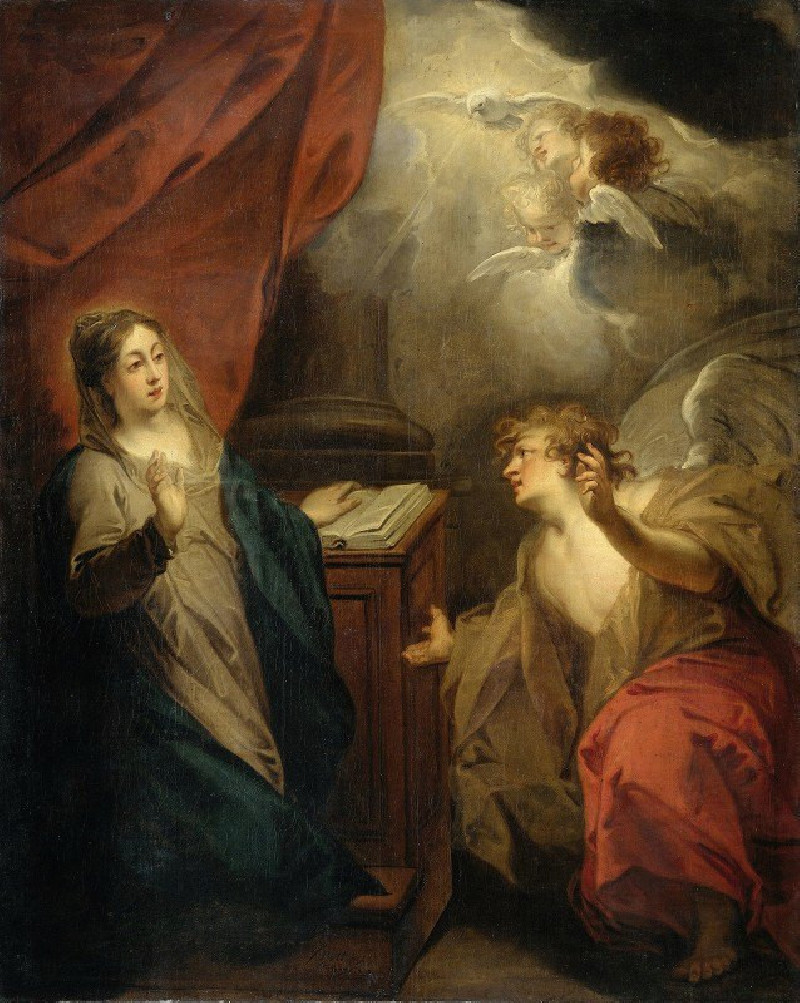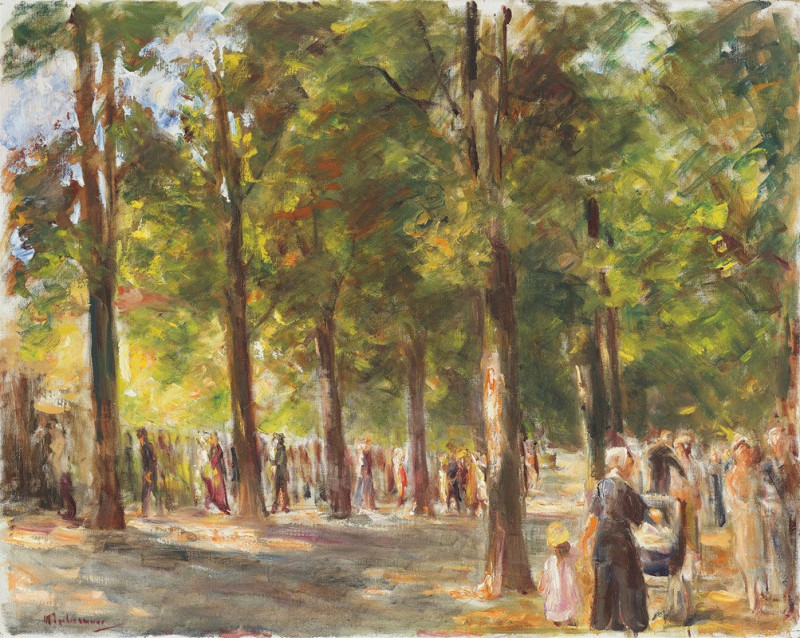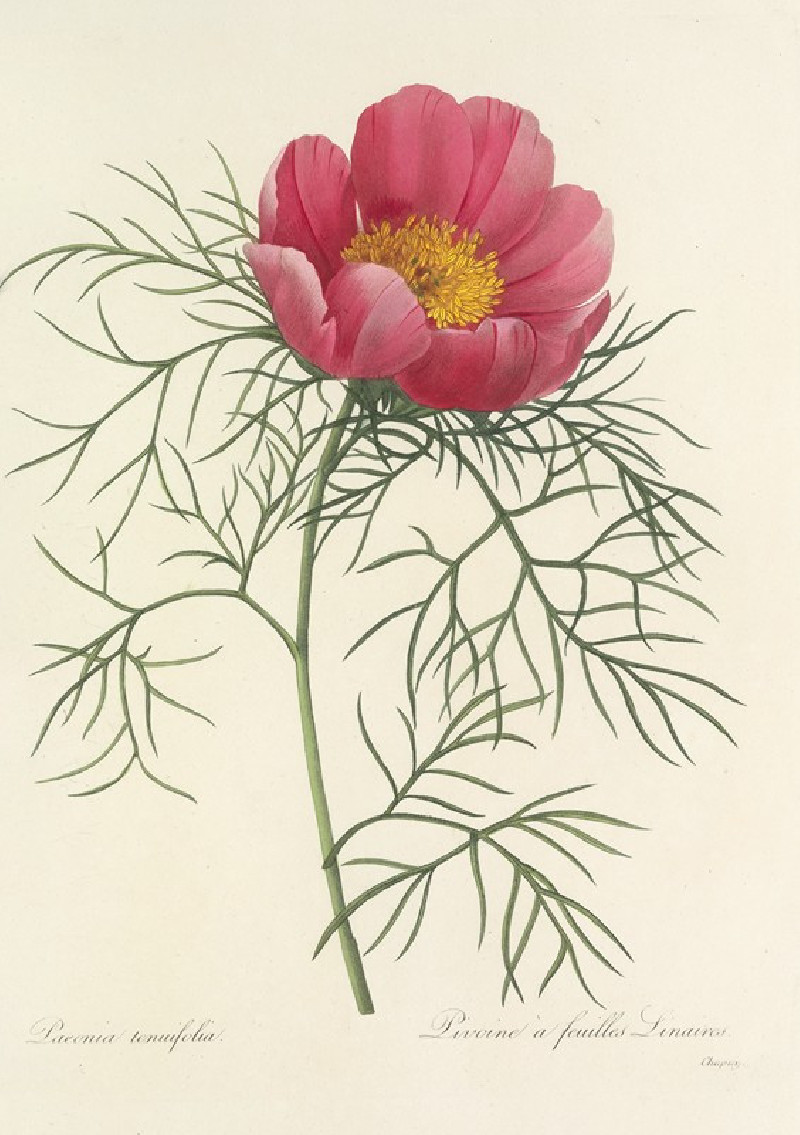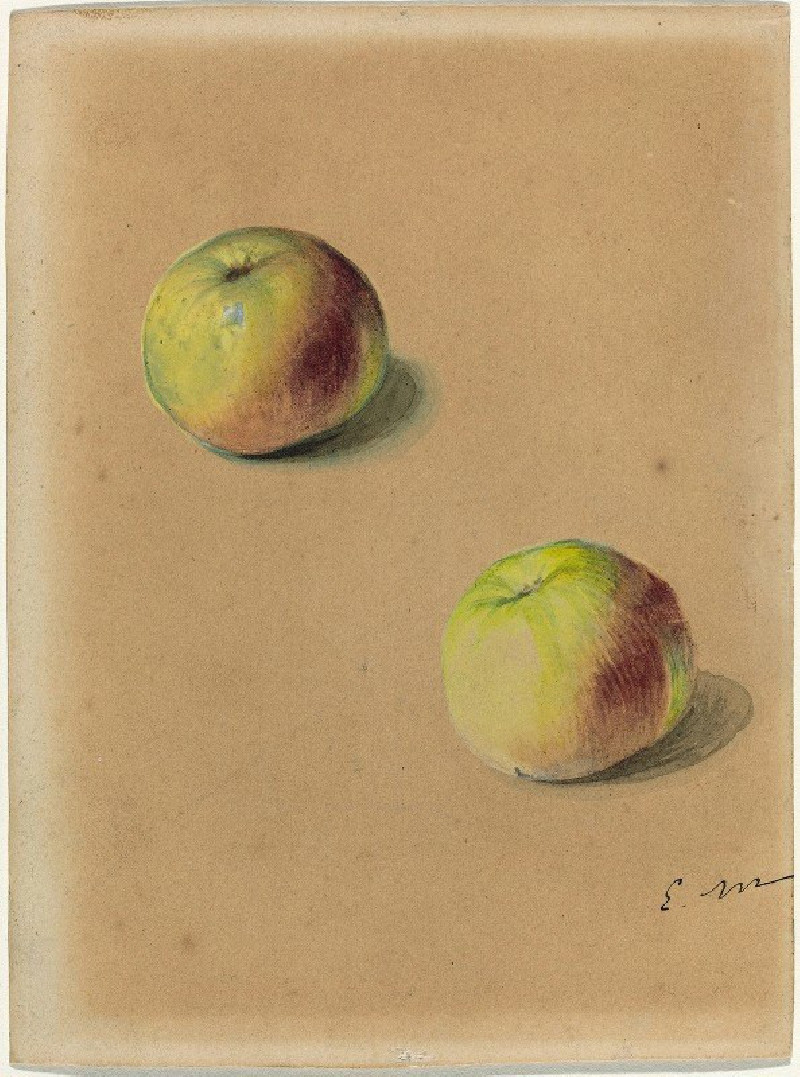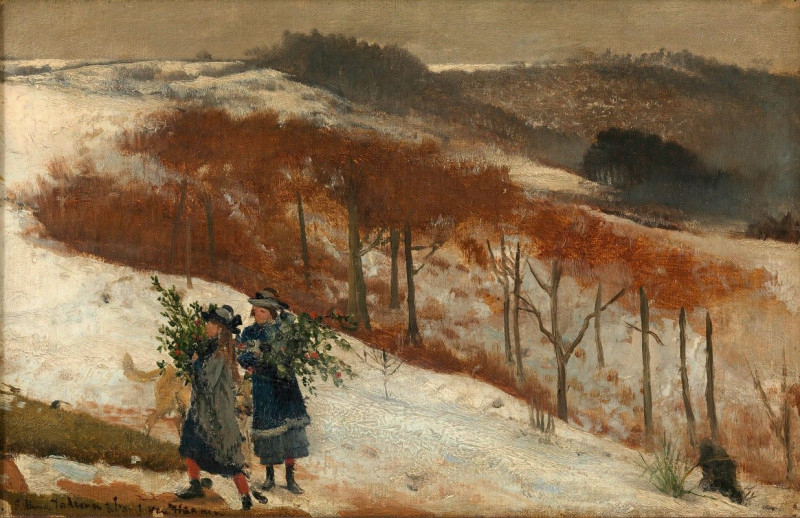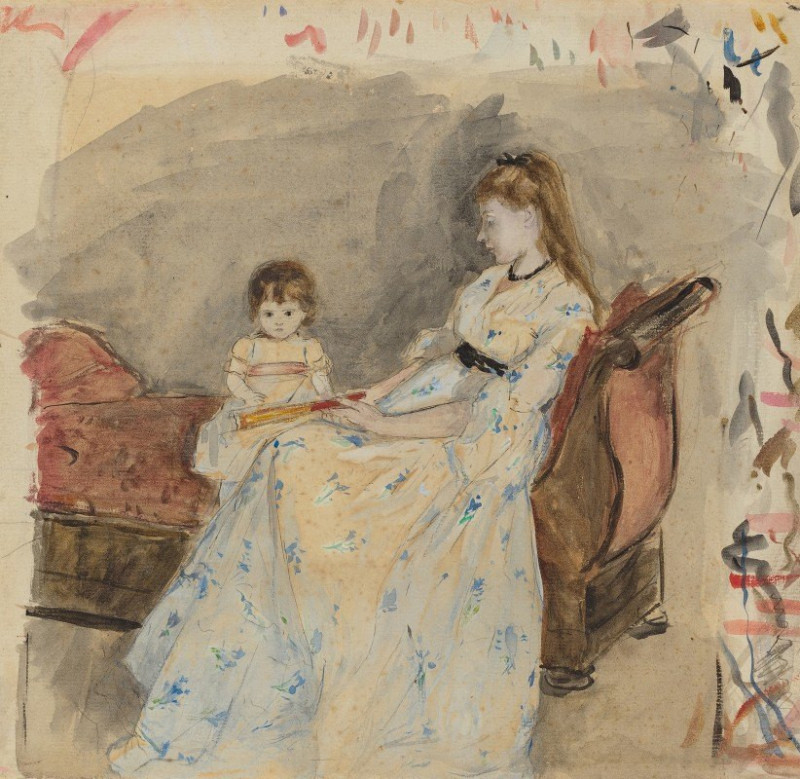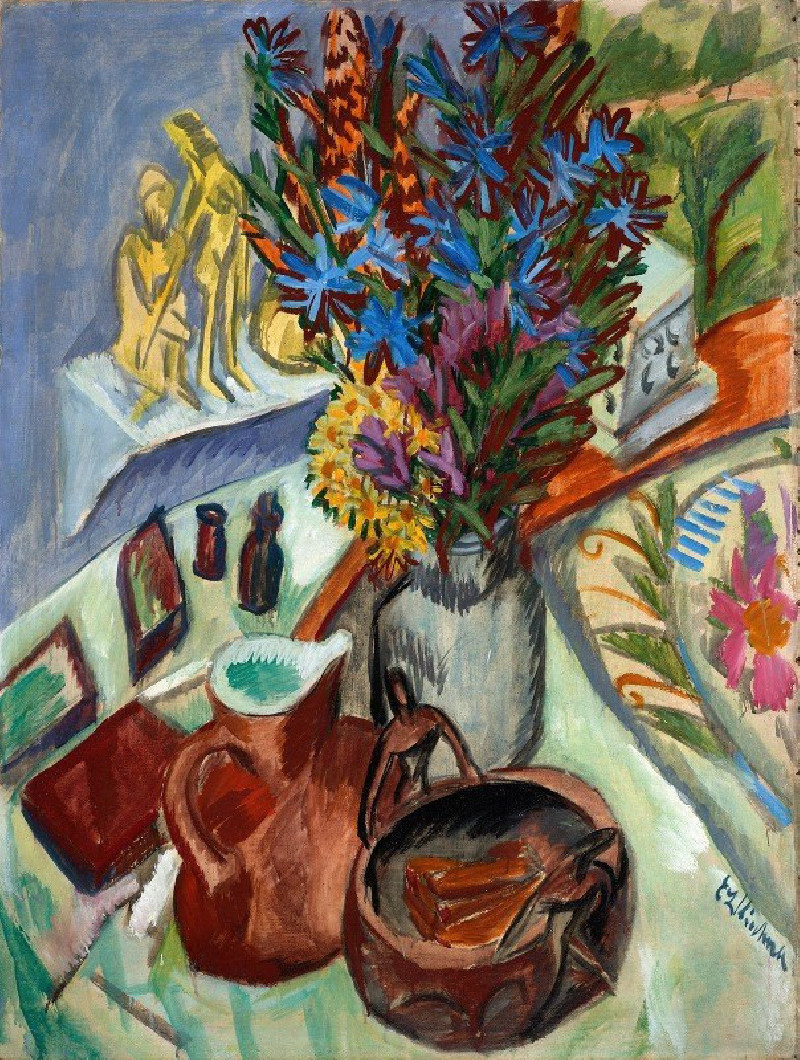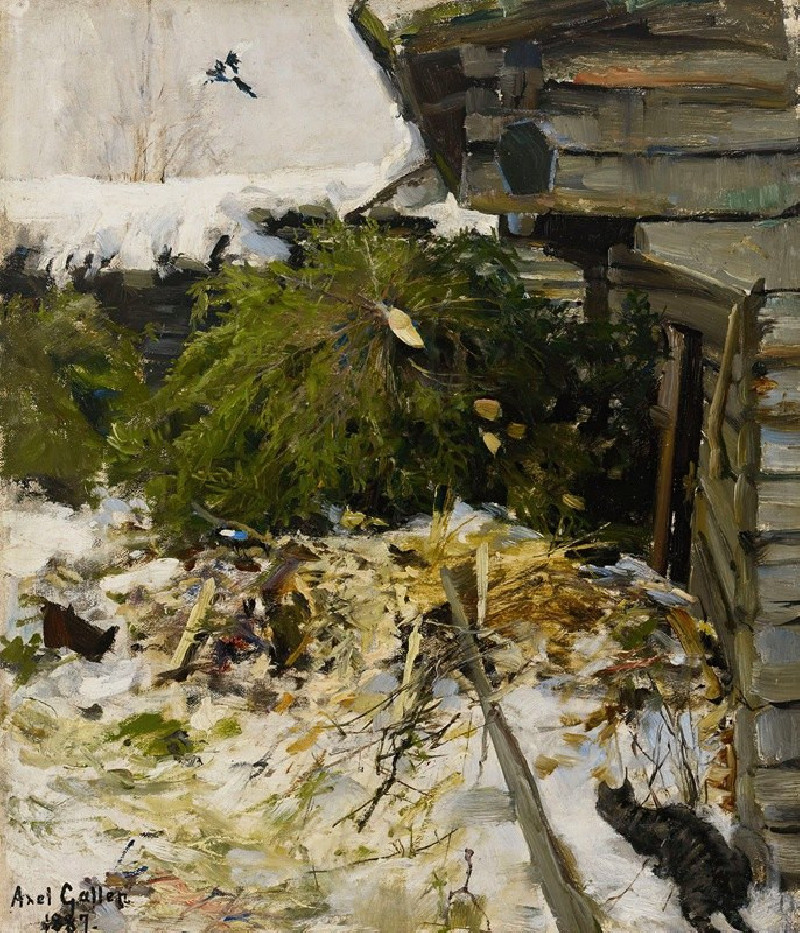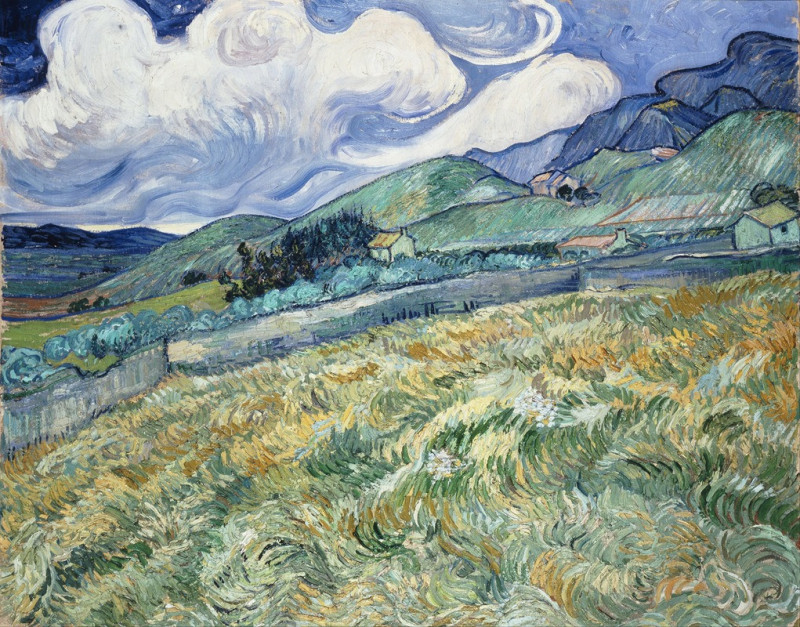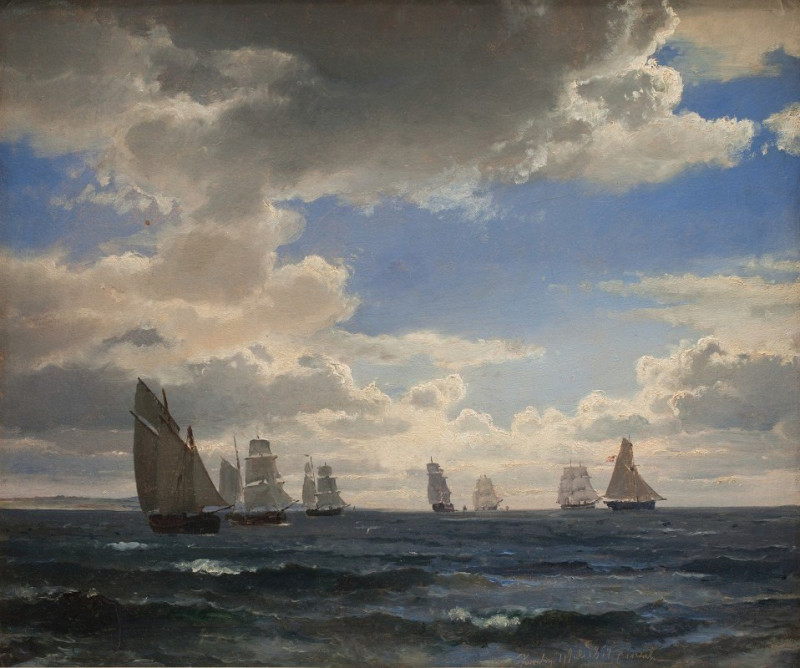Dal met begroeide bergen (1834 - 1911)
Technique: Giclée quality print
Recommended by our customers
More about this artwork
Dive into the serene beauty of nature captured in Jozef Israëls' mesmerizing artwork "Dal met begroeide bergen" (Valley with Overgrown Mountains). This painting, enveloping viewers in a sense of tranquility and awe, depicts a lush, verdant valley enclosed by dramatically rising mountains. Israëls, renowned for his ability to portray emotive landscapes and scenes, showcases his mastery in this piece.The painting is a symphony of natural hues, with green, brown, and soft grey tones layering to create a rich tapestry of texture and depth. The foreground of the composition is lush with various shades of green, suggesting a dense, thriving foliage that beckons nature lovers and explorers alike. In contrast, the mountains, etched with lines that suggest ruggedness and the passage of time, rise mightily. They are partly shrouded in mist or clouds, lending an air of mystery and majesty to the scene.The sky, depicted in soft washes of white and light blue, stretches expansively across the top of the canvas, suggesting a vastness that complements the secluded valley beneath. This element of the composition pulls the viewer's eye upwards and outwards, enhancing the feeling of being amidst an unspoiled natural sanctuary."Dal met begroeide bergen" not only showcases Israëls’ technical skill with a brush but also his profound sensitivity to the atmospheric qualities of a landscape. This piece is an invitation to pause and immerse oneself in the peaceful embrace of nature, reflecting on beauty that transcends time and place.
Delivery
Returns
Jozef Israëls was a Dutch painter. He was a leading member of the group of landscape painters referred to as the Hague School and, during his lifetime, "the most respected Dutch artist of the second half of the nineteenth century".
He was born in Groningen, of Jewish parents. His father, Hartog Abraham Israëls, intended for him to be a businessman, and it was only after a determined struggle that he was allowed to embark on an artistic career. He studied initially from 1835 to 1842 at the Minerva Academy in his home town Groningen.


